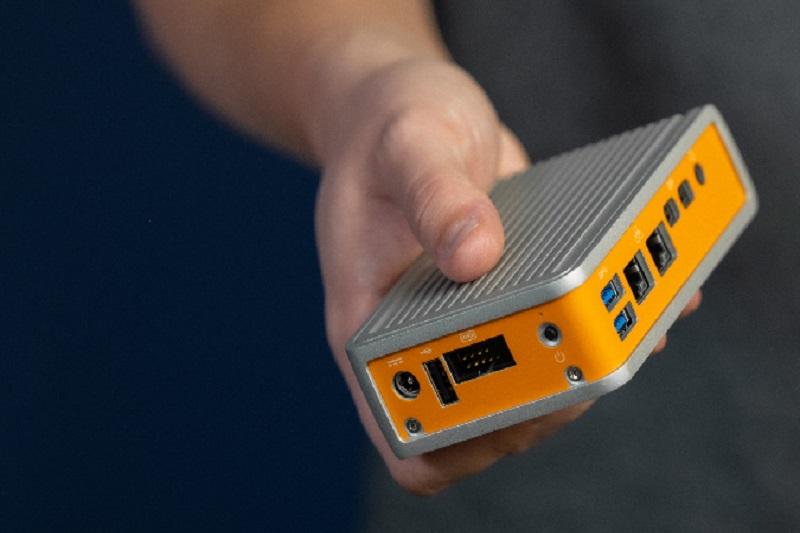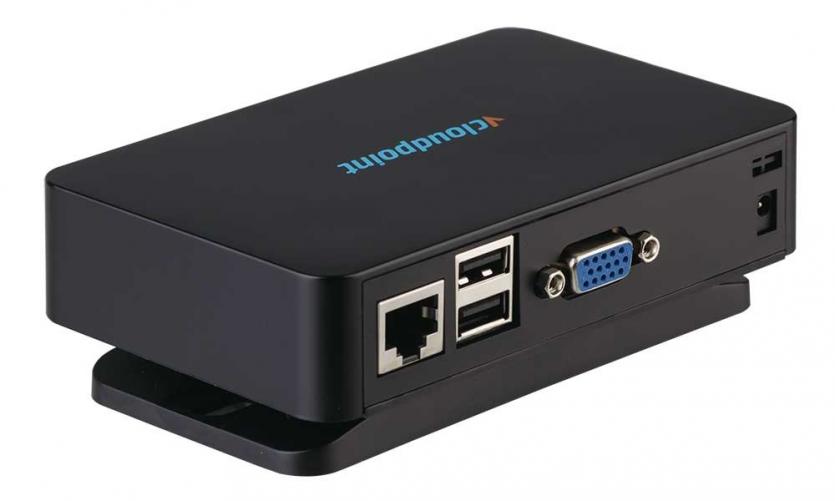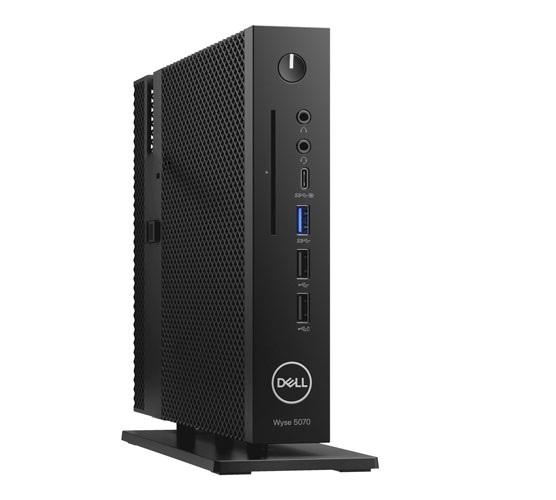Reduce Network Costs With Thin Client And Zero Client
Some Companies Want To Reduce The Cost Of Purchasing Equipment But Maintain The Productivity Of Employees by Turn To Client And Server Architecture.
Have, use The above architecture is one of the strategic plans of large organizations that intend to use the benefits of a robust communication network in the most economical way. In the above architecture, a powerful central server is purchased and deployed in the heart of the communication network to meet the needs of employees. Still, there are no computers or laptops because employees use equipment called Zero Client or Thin Client.
Additionally, organizations that plan to implement cloud-based and virtualized infrastructures, but reduce the overall cost of the architecture, turn to these two efficient network devices.
What is Xeroclient?
Xeroclient is a server-based computing device with no local memory (Figure 1). Xeroclient can be compared to a thin client that stores the operating system and configuration settings specific to each device in flash memory. More specifically, zero clients are small, affordable electronic devices that have potential index benefits. These small devices, which sometimes have only one electronic board, offer the ideal solution for virtual infrastructures.
They occupy less physical space than personal computers and servers in complete silence due to the absence of a fan. Due to their specific architecture and technical structure compared to personal computers and thin clients, they have less setup time and help IT experts identify and fix problems quickly (in general, zero clients don’t have any particular problem, and in most cases, the issues are from infrastructure and wrong user).
Generally, the hardware that forms the foundation of zero clients is not robust. You shouldn’t expect to find Xero clients with mighty processing power, lots of main memory, or external storage space under Xeroclient. They are designed to reduce costs and provide essential services to companies. Since zero clients need a central server or a hypermetric server to provide services, they rely on the resources provided by the server to perform any processing; resources provided to zero clients through specific organizational policies.
Based on this definition, you can see that Xero clients play the role of an access terminal, and all computing processes are performed on the server. When buying Xero clients, pay attention to the weight, dimensions, communication ports, number and type of video ports, USB ports, audio output, network card port, and the ability to customize the firmware.
figure 1
How does zero client work?
Zero clients are devices equipped with input and output ports that receive and display information from the user. All input (mouse clicks, keyboard keystrokes, etc.) is sent to the server when you use Xero clients. The server processes the requests and sends the result to the zero clients, which is visible through the screen. It is why hyper-devices are called zero-client (zero clients) because all processing is done on the server side, and no processing is done on the client side.
Xero clients do not have an operating system and use the system installed on the server. Typically, zero clients have an internal processor installed to work with proprietary protocols (protocols such as PCoIP) to communicate with a remote server. Some models allow users to update the firmware to support different protocols, such as Microsoft RDP or Citrix HDX, but typically only one protocol can be used at a time.
One of the most significant advantages of using zero clients is increased security since no data is stored on them. Because zero clients have no local memory, they are not vulnerable to cyber-attacks. To be more precise, all the programs and data users need are hosted on a central server.
Inside Xero clients, there is a software called middleware. This middleware has a very straightforward and optimized design and can receive and send the information from the mouse and keyboard to the server. It gets the data processed by the server and shows it to the user. Based on this definition, you can see that Xeroclient is an interface between the client and the server.
In this architecture, the applications, operating systems, and information needed by the users are all installed and stored in the servers. The client accesses the required information through Xeroclient and a communication mechanism such as a virtual desktop. From the user’s point of view, he owns a personal computer that allows him to access the information he needs, but technically it is the server that processes the user’s requests.
Hardware specifications of xeroclients
Xero clients are physically small hardware equipment in the network world. Typically, they are small in size and light in weight. They are equipped with a dedicated processor, firmware, and a combination of ports such as HDMI, DVI, DisplayPort, USB, and Ethernet.
The power supply provides the energy required by these devices. Some models have microphones and headphone jacks and can support multiple monitors.
What is a thin client?
A thin client should be described as a tiny network-based computer that requires a central server to perform most tasks (Figure 2). Thin clients are developed to provide limited functionality, so thin clients are a good choice if you want a device with limited capabilities but more advanced than zero clients. A thin client is a virtual desktop-based computing device that, like Xeroclient, uses central server resources.
Thin clients are marketed as low-cost computing devices because they require server power to perform most calculations. Organizations and public environments such as libraries or government offices can use thin clients because of their security, scalability, and good management.
Thin clients work by connecting to a server-based computing environment. The server hosts applications and application data while providing the main memory and processing power needed by thin clients. All these requirements are provided to thin clients through the virtual desktop environment hosted on the server. Thin clients are managed on the server side and require “virtual desktop infrastructure” (VDI).
Thin clients, like Zero clients, need a stable connection to the server to perform complete calculations and can perform limited processing. Of course, compared to zero clients, some models are equipped with hardware components such as main memory, processor, etc., to perform basic calculations.
figure 2
What are the uses of the thin client?
For organizations and production units that want to provide a simple computing device to their employees but reduce the cost of purchasing equipment, it is better to use thin clients. Thin clients can be described as an alternative to personal computers that allow users to perform their tasks through virtual desktops or applications hosted on a server.
In general, thin clients are more cost-effective than computers that do all the processing locally. And in addition, organizations can provide thin clients to employees who work remotely and need to connect to corporate resources securely.
In this case, there is no longer any particular concern about the failure of personal computers or various types of vulnerabilities. Of course, thin client security is not as secure as Xero clients, but it’s still faster than PCs.
An important point to note about zero clients and thin clients is that if the endpoint device downloads most of its data from the server and does not store data or uses flash memory to store data, fewer moving parts (hard disk ) and as a result of the concern about the hard disk failure, it does not threaten the data, because any changes that the user applies to the data are directly stored on the server.
To use thin clients, you must ensure that you have prepared the appropriate infrastructure. The first thing you should pay attention to is that you have prepared a stable environment and a powerful communication channel that provides enough bandwidth. Also, be aware that applications that require heavy processing resources may experience slow execution, as several people may connect to the network simultaneously.
Therefore, you need a server with enough storage space, processing power, and main memory to respond to thin clients and virtual desktops without problems. Thin clients are best recommended for organizations that use fewer applications and have an efficient backend infrastructure to support the needs of thin clients.
What is the difference between a thin client and a zero client?
The primary and most crucial difference between zero clients and thin clients lies in their type of use. In most cases, thin clients are similar to a remote computer and can include hard drives, solid state memory, and other hardware components with less processing power and are sometimes used as a replacement for personal computers. Xero clients depend on a server or cloud infrastructure to provide services, while some models of thin clients can provide services without the need for a network.
On the other hand, zero-clients do not have an operating system, hard disk, and moving parts and use dedicated hardware for processing. Xeroclientcan uses communication protocols such as PCoIP, HDX, or RemoteFX VDI to communicate with the server. This issue makes them perform faster than thin clients. On the other hand, the startup speed of Xero clients is faster than thin clients, which increases the productivity of end users.
Thin clients support the architecture of multiple communication protocols and therefore are not limited to a specific communication channel, and the operating system can install on them. In contrast, zero clients require much less updating.
Thin clients provide the possibility of establishing multiple connections based on virtual desktop infrastructure, and it is possible to monitor them through a centralized management dashboard. At the same time, zero clients support only one or two parallel communication channels of hyperthreading.
The configuration of zero clients is not particularly complicated, and it is possible to use them most.
Also, the lack of standard hardware against cyber attacks makes it more secure than thin clients. One of their advantages over thin clients is that they do not store information on them; in some models, it is impossible to update the firmware.
In general, Xero clients are inexpensive networked devices that require a keyboard, mouse, display, and Ethernet connection to communicate with a remote server.
Then in the above architecture, access to the server that hosts the operating system and applications is done via wireless or cable. In general, Xero clients are elementary and primitive computers that cannot do most of the things that a personal computer does and rely on a central server to provide services.
Xero clients are often used in a virtual desktop infrastructure (VDI) environment. The above approach makes them a good option for remote work or distributed work environments.













